
When it comes to maintaining your chainsaw, ensuring that the chain is in top condition is crucial. Whether you’re using a Stihl, Husqvarna, Echo, or any other chainsaw for that matter, the principles remain consistent.
A well-maintained chain ensures not only efficiency but also safety. Let’s delve into the essentials you’ll need to embark on this task.
Tools and Parts Used To Replace Chainsaw Chain

Every expert craftsman knows that the right tools make all the difference. Before we delve into the replacement process, it’s imperative to ensure we have everything we need.
Here’s a complete list of everything you will need:
- Safety Gloves: An absolute essential. Your safety is paramount. SEE ON AMAZON
- Chainsaw Wrench: Specifically designed for chainsaw maintenance, this tool is indispensable. SEE ON AMAZON
- New Chainsaw Chain: It’s vital to ensure the chain is a perfect match for your chainsaw model. SEE ON AMAZON
- Clean Cloth: For ensuring a clean work environment, free from oil or debris. SEE ON AMAZON
With these tools at your disposal, you’re more than ready to give your chainsaw the attention it deserves.
The Replacement Process: A Comprehensive Guide
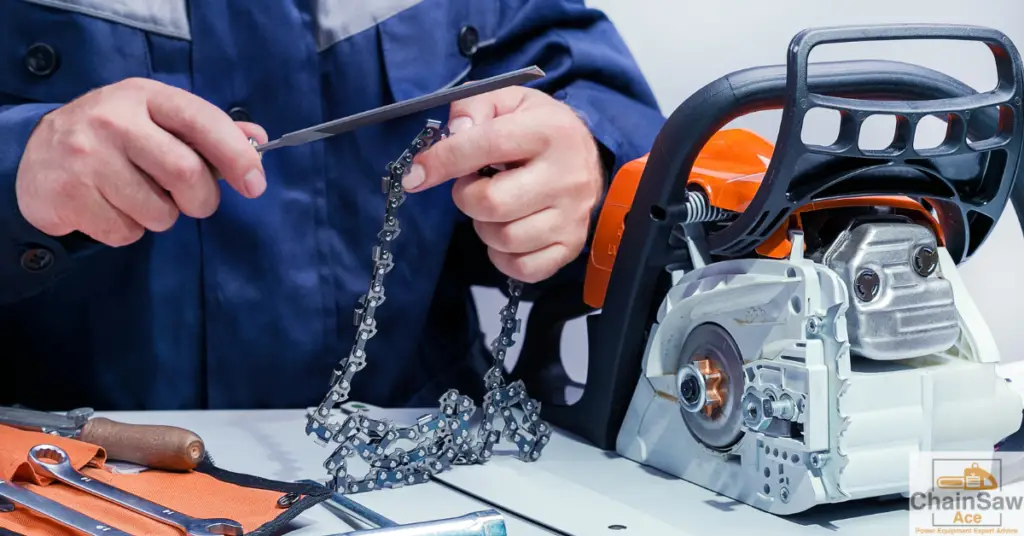
Replacing a chainsaw chain might sound daunting, but with some guidance, it’s a task that can be mastered with ease. Let’s break it down, step by step, ensuring every detail is covered.
Remove the Bar Cover
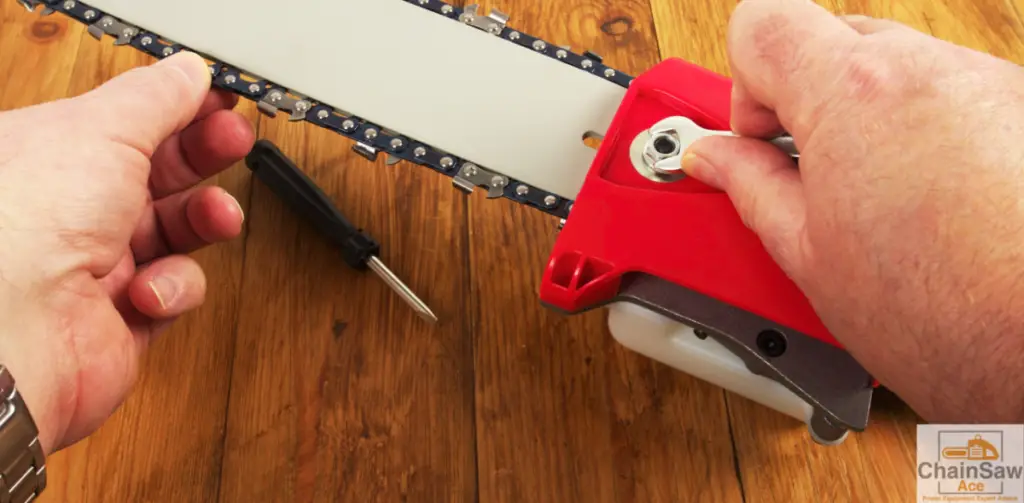
This is your first step in the chain replacement process.
- Safety First: Before any action, ensure your chainsaw is turned off or unplugged if it’s an electric chainsaw. This cannot be stressed enough.
- Loosen Up: With your saw wrench, methodically undo the nuts holding the guide bar cover.
How to Select the Correct Chain for Stihl Chainsaws

The chain is the workhorse of the chainsaw. Selecting the correct chain for your particular saw is crucial.
- Size Matters: The chain’s length should match your chainsaw’s bar length and pitch.
- Specifications: Delve deep. Understand terms like pitch and gauge to ensure perfect compatibility.
The specifications of the chain can be found directly on the chainsaw bar. This spec information is typically stamped onto the bar, usually near the point where the bar is inserted into the chainsaw.
Remove the Bar and Chain
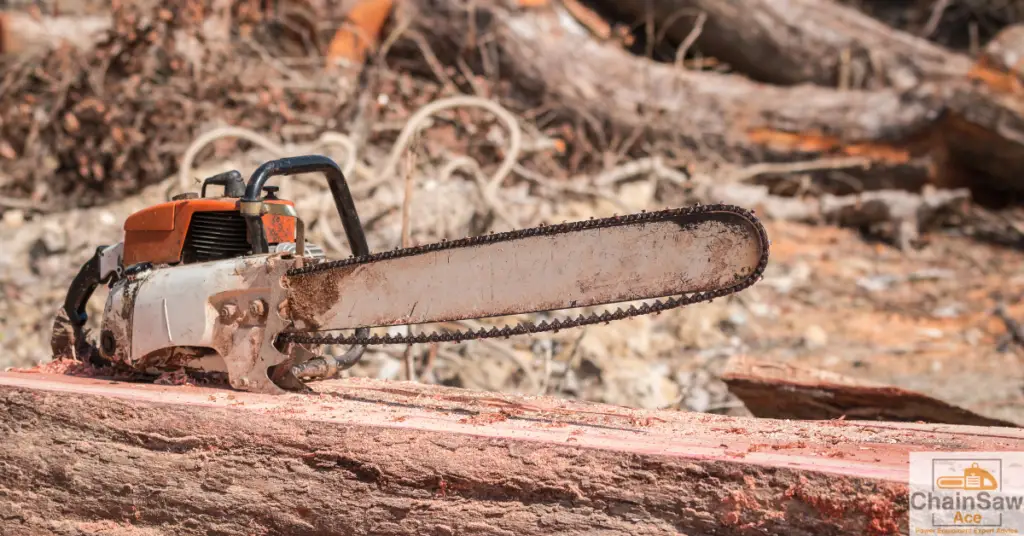
Now, remove the bar and chain from the chainsaw.
- First, loosen the bar nuts on the chainsaw. Next, remove the chain cover and smoothly slide out the bar and chain from the chainsaw.
- Cleanliness is Key: Use your clean cloth to ensure the area is clean from debris and wood chips. If not, wipe it.
Place the Bar and New Chain onto the Saw
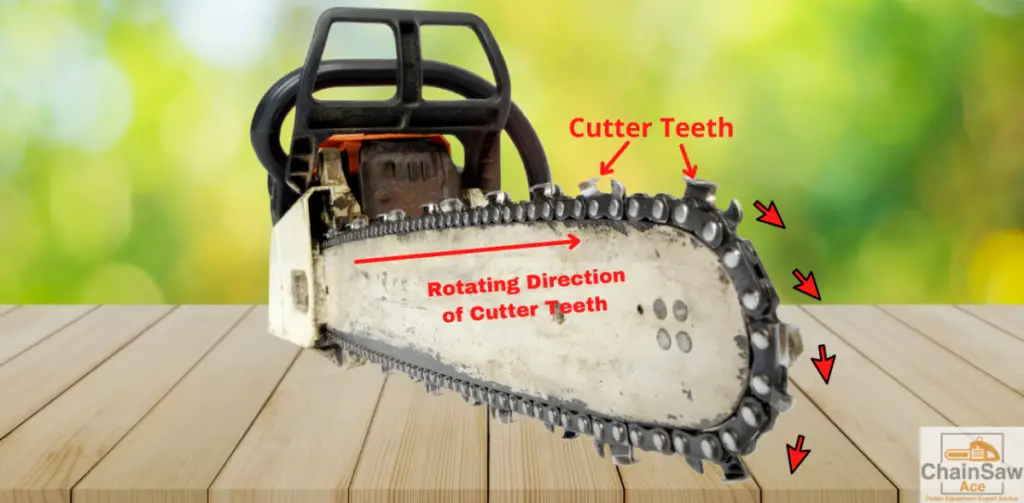
This step is a little tedious. You must make sure everything lines up correctly.
- Place the new chain into the groove of the guide bar with the sharp cutters facing forward along the top of the bar. This ensures the chain is facing the correct direction.
- Alignment: Now, fit the back of the chain around the sprocket of the chainsaw and slide the bar over the mounting studs on the chainsaw.
- Ensure proper alignment of the bar against the chainsaw’s engine body. Once you’ve achieved this, place the chain cover back on the chainsaw. Gently tighten the bar nut with your fingers until snug but not tight.
Tighten the Chain Tensioning Screw
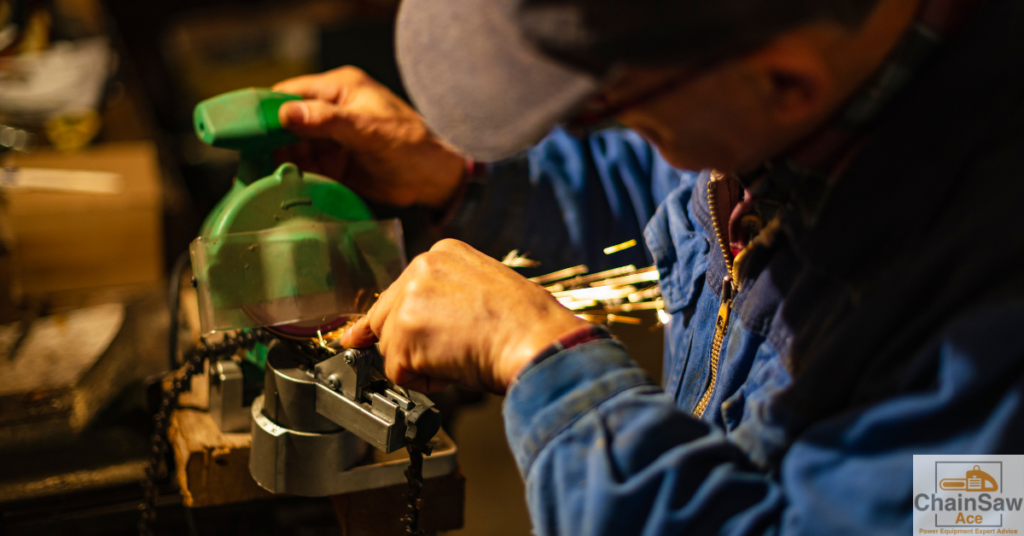
This ensures the chain is not too tight or too loose and operates efficiently.
- Chain Adjustments: With your saw wrench or flat-head screwdriver, make adjustments to the tensioner screw so that the chain is properly adjusted.
Adjust the Chain Tension
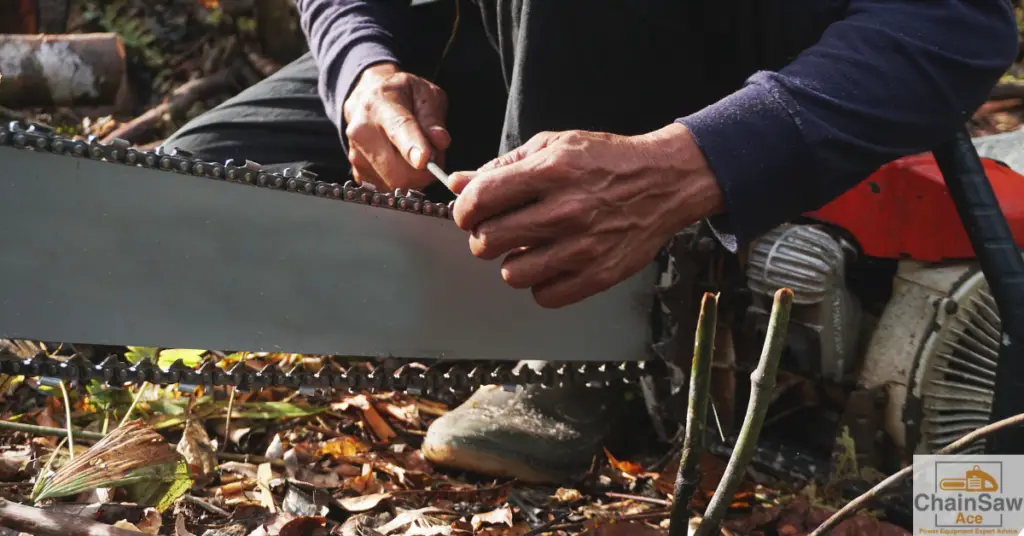
Balance is the keyword here.
- The Snap Test: A simple pull on the chain should see it retract smoothly into the guide bar.
- Tuning: Make necessary adjustments based on the tension of the chainsaw chain and its elasticity.
Fully Tighten the Cover Nuts
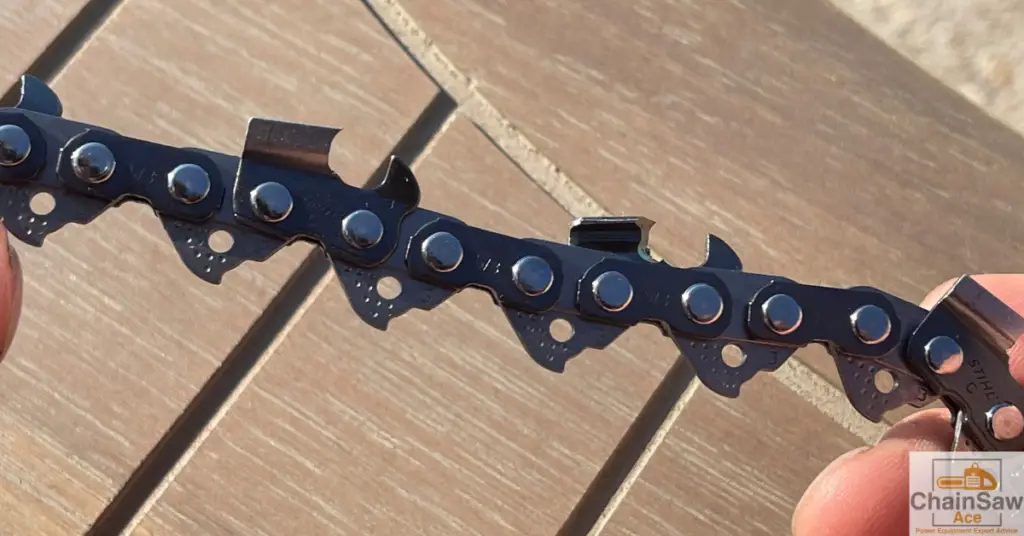
Finishing up the chain replacement process.
- Lock It In: With your saw wrench, tighten the chainsaw bar nuts all the way tight. Make sure everything is locked in securely before operating the chainsaw.
Additional Chainsaw Chain Information
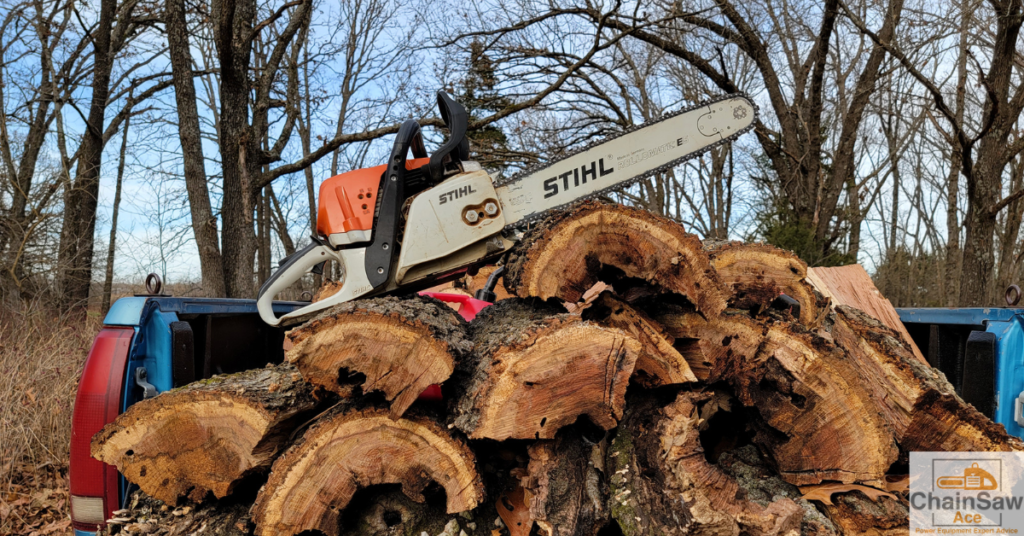
How Do You Put a New Chain on A Chainsaw?
Putting a chain on a chainsaw is a systematic process that ensures both efficiency and safety:
- Safety First: Always start by ensuring the chainsaw is turned off and, if it’s electric, unplugged.
- Open the Cover: Using a saw wrench or suitable tool, remove the side cover of the chainsaw.
- Remove the Old Chain: Carefully remove the old chain from the saw. Be sure to recycle the old chain.
- Position the Chainsaw Chain: Place the new chain around the rear sprocket, ensuring it fits into the groove.
- Align with the Guide Bar: Stretch the chain out along the guide bar, ensuring it sits in the bar’s groove all the way around.
- Tighten and Secure: Reattach the side cover and slightly tighten the nuts. Adjust the chain tension using the tensioning screw until the chain sits snugly against the guide bar but can still be turned easily by hand. Fully tighten the side cover nuts.
How Do You Remove a Chainsaw Chain?
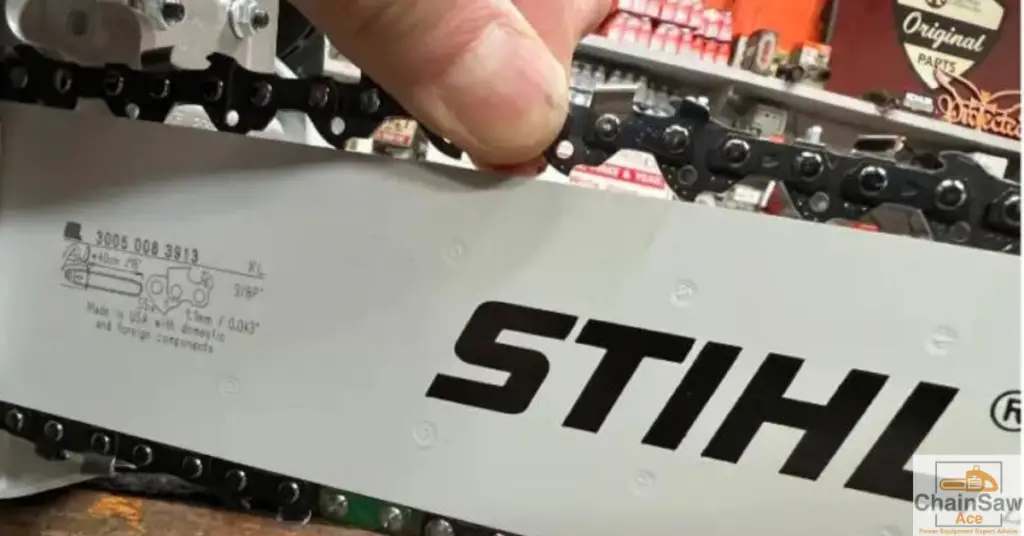
Removing a chainsaw chain is a straightforward and quick process.
- Safety Precautions: Ensure the chainsaw is turned off and unplugged.
- Loosen the Side Cover: Use a chainsaw wrench to loosen the nuts on the side cover.
- Release Tension: Turn the chain tensioning screw counterclockwise to release tension.
- Remove the Side Cover: Take off the side cover completely.
- Free the Chain: Gently lift the chain off the guide bar and sprocket. It should come off easily.
How often does a chainsaw chain need to be replaced?
The frequency of chainsaw chain replacement largely depends on usage and maintenance. However, as a general rule:
- For regular users, inspect the chain every 10 hours of operation. If it appears dull, damaged or isn’t cutting efficiently, it’s time for a replacement.
- For occasional users, a visual inspection every few months is advisable. Replace the chain if you notice signs of wear or damage.
- Always remember a sharp chain ensures efficient cutting and reduces the risk of kickback, making it safer to operate.
- If the chain will not get tight after adjusting the chain tensioning screw all the way to the end, you need to replace your chain.
How Do You Reattach a Chain on An Electric Chainsaw?
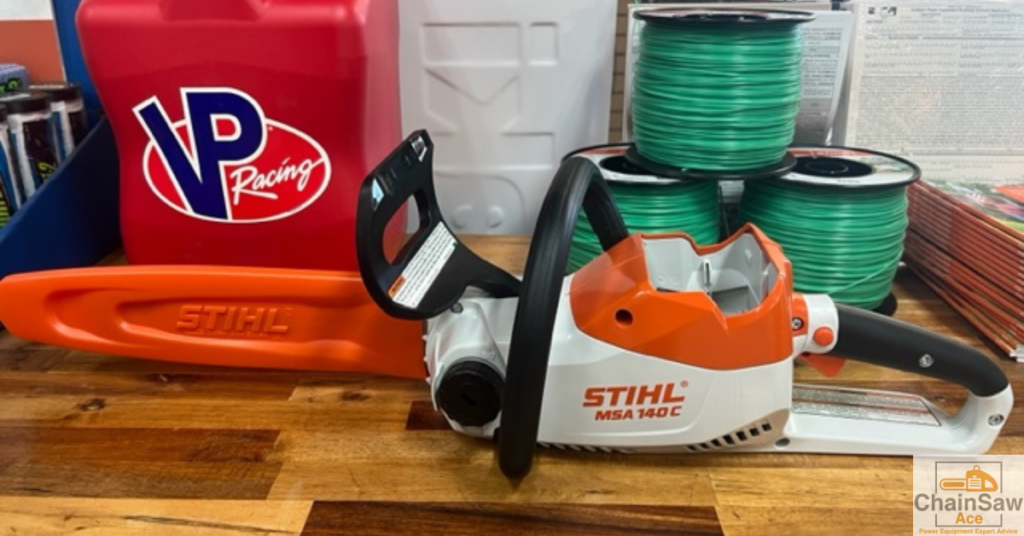
Reattaching a chain on an electric chainsaw follows a similar process to gas-powered chainsaws, with a few nuances:
- Safety First: Ensure the electric chainsaw is unplugged.
- Access the Guide Bar and Sprocket: Open the side cover using a chainsaw wrench or the tool provided with your chainsaw.
- Position the Chain: Place the chain around the sprocket, ensuring it aligns with the groove.
- Align with the Guide Bar: Stretch the chain out along the guide bar, making sure it sits snugly in the bar’s groove.
- Secure Everything: Reattach the side cover. Adjust the chain tension using the tensioning screw until the chain is taut but can still be turned by hand. Tighten the side cover nuts securely.
Wrapping Up
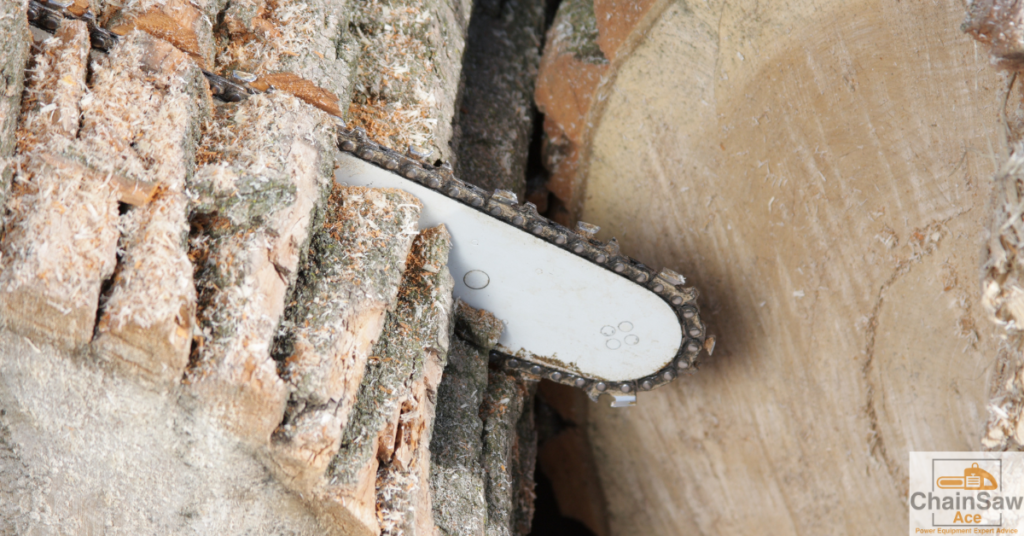
Replacing a chainsaw chain is a pivotal skill for every chainsaw owner, crucial for both the saw’s efficiency and the user’s safety. Whether you’re using a Stihl, Husqvarna, Echo, or any other brand for that matter, the core steps are consistent.
From the initial removal of the bar cover to the final tensioning of the new chain, each step is very simple to do. The right tools, such as the chainsaw wrench and safety gloves, are recommended for a smooth and safe process.
In essence, replacing a chain is not just about maintenance; it’s about ensuring every cut is safe and efficient. With this knowledge, chainsaw owners are ready to approach this task confidently, ensuring longevity and safety in their wood-cutting tasks.
Thanks for reading, and be safe out there.
Steven R.
FAQs
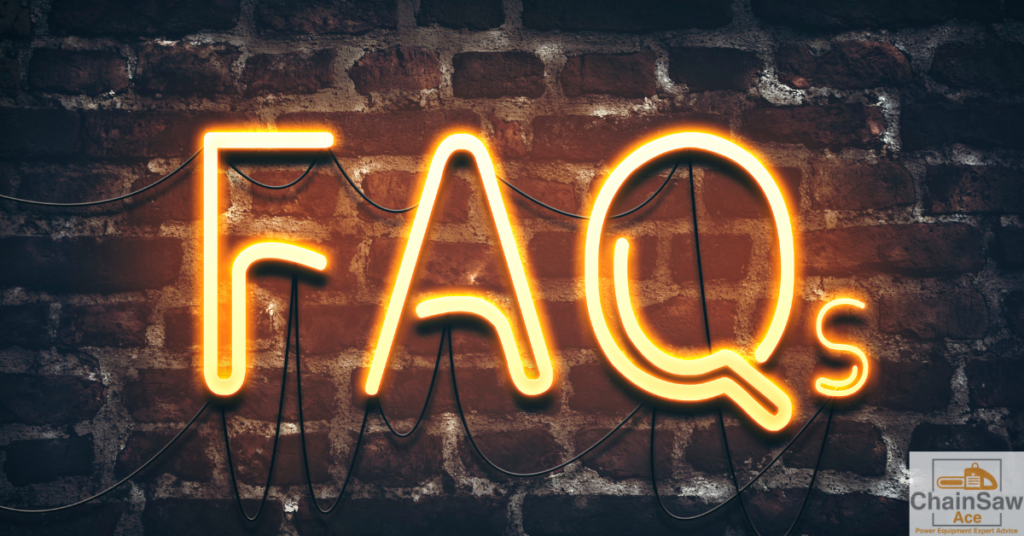
How Often Should I Replace My Chainsaw Chain?
Depending on usage, inspect the chain every 10 hours of operation. Regular checks ensure longevity. If the chain is worn or stretched, replace it with a new chain.
What Are the Signs of A Dull Chainsaw Chain?
If your chainsaw struggles to cut or produces fine sawdust, it’s a clear sign.
How Do I Know If My Chainsaw Chain Tension Is Correct?
The chain should retract smoothly when pulled and glide effortlessly when turned manually.
How Do I Know When It’s Time to Replace Chainsaw Chain Stihl?
When your chain starts to become dull or shows signs of wear, it’s a clear indication that you should consider replacing it. One of the symptoms of a dull chain is its inability to cut smoothly, resulting in sawdust instead of wood chips.
What Tools Are Essential for The Chain Replacement Process on A Stihl Chainsaw?
A saw wrench is crucial for adjusting the tensioning screw and loosening the two nuts on the guide bar.
How Can I Ensure I’m Using the Correct Chain for My Stihl Chainsaw?
Always refer to your chainsaw’s manual or consult with a professional. It’s vital to have the correct chain for optimal performance.
How Do I Adjust the Tension of The New Chain on A Stihl Chainsaw?
After placing the new chain on the guide bar, use the tensioning screw to adjust its tension. Ensure the drive links fit snugly into the groove of the Stihl chainsaw bar.
After Replacing the Chain, How Do I Ensure It’s Securely in Place?
After adjusting the tension using the tensioning screw, it is essential to fully tighten the guide bar back onto the chainsaw by fully tightening the bar nuts back into place.
This step is absolutely crucial to ensure that the chain remains in its proper place, preventing any potential injuries to yourself or damage to the chainsaw.
Are There Different Chain Options Available for Stihl Chainsaws?
Absolutely, there are more options available based on the model of your Stihl chainsaw. Always ensure you choose to accept the recommended chain type and choose to reject incompatible ones.
What Are Drive Links on A Chainsaw Chain, and Why Are They Important when Replacing a Chain?
Drive links are the bottom parts of a chainsaw chain that fit into the groove of the guide bar and drive the chain around the bar. When replacing a chain, it’s crucial to ensure that the drive links fit snugly into the guide bar’s groove.
If they don’t fit correctly, the chain might not rotate smoothly, leading to inefficient cutting and potential safety hazards. Always refer to your chainsaw’s specifications to select a chain with the appropriate drive link count, gauge size and pitch.
Additional Tips for Chainsaw Maintenance
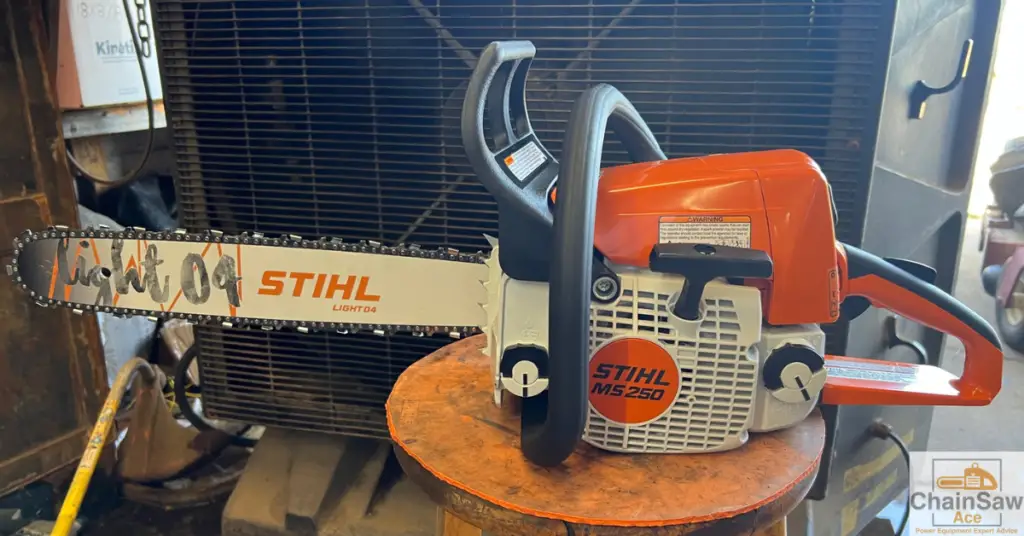
A chainsaw, like any precision tool, operates at its peak with regular care and attention. While chain replacement is a significant aspect of maintenance, there are several other facets to consider to ensure your chainsaw remains in peak condition for years to come:
- Regular Cleaning:
- Importance: Wood chips, sap, and other debris can accumulate on your chainsaw during operation. This not only affects its efficiency but can also be a safety hazard.
- Procedure: After each use, give your chainsaw a thorough cleaning. Use a brush to remove wood chips and debris from the chain and guide bar. For sticky substances like sap, a cloth dampened with a mild detergent can be effective. Ensure the air filter is clean and free from obstructions, as a clogged filter can affect performance and fuel efficiency.
- Oil Check:
- Importance: Proper lubrication is vital for the smooth operation of your chainsaw. It reduces friction, prevents wear and tear, and ensures the chain glides smoothly over the guide bar.
- Procedure: Regularly check the oil levels in your chainsaw. If it’s running low, refill with the manufacturer-recommended oil. Also, inspect the oiler to ensure it’s functioning correctly. A well-lubricated chain should leave a light imprint on a piece of paper when touched against it.
- Storage:
- Importance: Proper storage can significantly extend the life of your chainsaw. It prevents unnecessary wear, rusting, and potential damage from external factors.
- Procedure: Always store your chainsaw in a cool, dry place. If possible, hang it with the guide bar and chain suspended to prevent any tension. Before long-term storage, drain any remaining fuel, and consider applying a light coat of oil to the chain and guide bar to prevent rust.
- Regular Inspections:
- Importance: Periodic checks can help identify potential issues before they escalate.
- Procedure: Before each use, inspect your chainsaw for any signs of damage or wear. Check the tightness of all nuts and screws, and ensure the handle is secure and the throttle functions smoothly.
- Sharpening the Chain:
- Importance: A sharp chain ensures efficient cutting, reduces the risk of kickback, and puts less strain on the chainsaw. A properly sharpened chain will greatly enhance the quality of cut of your chainsaw.
- Procedure: Depending on usage, periodically sharpen the chain using a suitable file or a chainsaw sharpening tool. Always follow the manufacturer’s guidelines for sharpening angles and depths.
By adhering to these maintenance tips, you’re not just prolonging the life of your chainsaw; you’re ensuring safer, more efficient chainsaw operation and, ultimately, better results in all your wood-cutting jobs.

